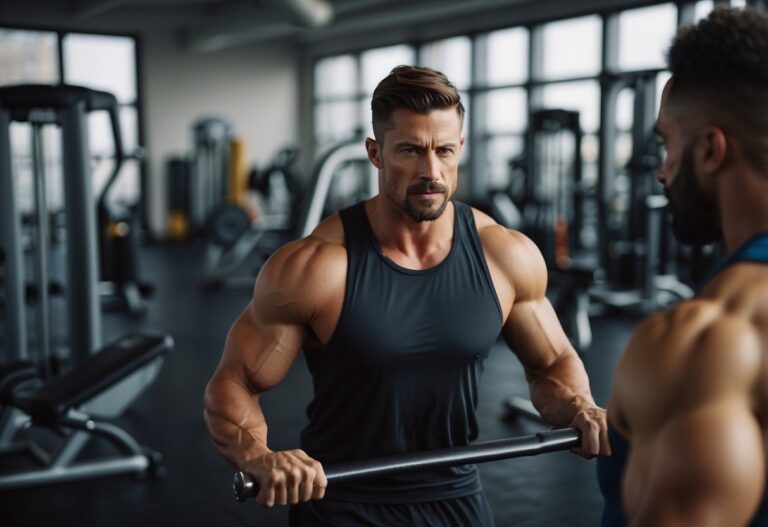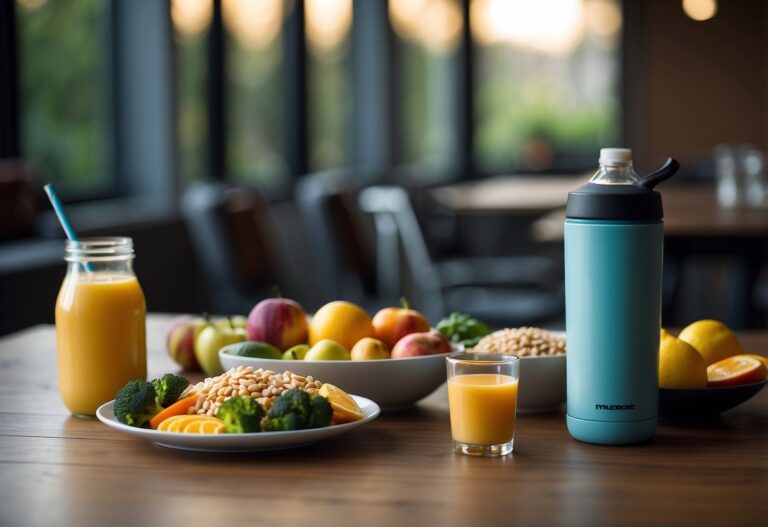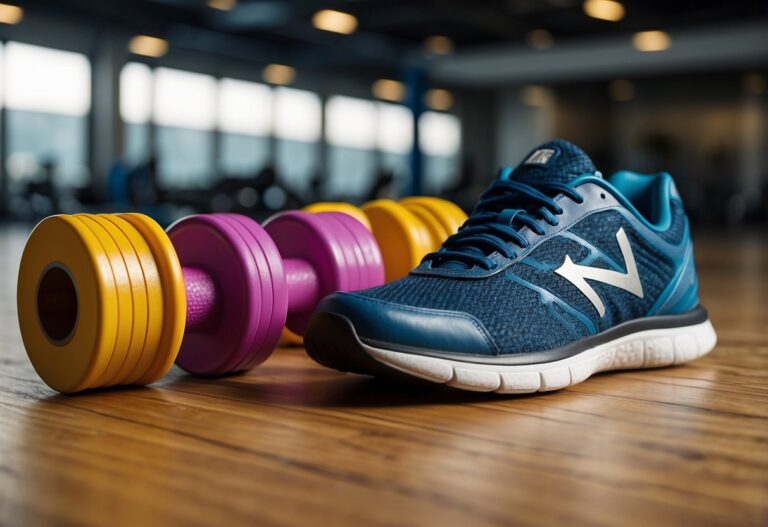Getting the most out of your pull workouts can be tricky, but with the right tips, anyone can see improvements. What are the best exercises and techniques for building muscle and strength during pull workouts? This article will explore practical advice to enhance your routine, backed by expert recommendations.

Whether you’re aiming to sculpt your back, build stronger arms, or just want to feel more confident in your workouts, incorporating effective pull exercises is essential. You’ll discover valuable insights and tips to help you achieve your fitness goals and make the most of your time at the gym.
Deadlifts
Deadlifts are a key exercise in many pull workouts. They engage multiple muscle groups, like your back, hamstrings, and glutes.
To perform a deadlift correctly, stand with your feet hip-width apart and grip the barbell with both hands. Keep your back straight, lift the barbell by driving through your heels, and then lower it back down.
Using proper form can prevent injuries. Deadlifting helps build functional strength and stability, making it useful in everyday activities where you need to lift heavy objects.
For more detailed tips, you can check out this list of deadlift techniques to improve your form.
Pull-ups
Pull-ups are a fantastic way to build upper body strength. They’re simple to do but can be quite challenging. Start by hanging from a bar with your palms facing away. Pull your body up until your chin is over the bar, then lower yourself back down.
If you’re new to pull-ups, try starting with banded pull-ups. Loop a band around the bar and place your feet in it for support. This helps you develop the necessary strength.
Another helpful variation is the negative pull-up. Jump up or use a box to get your chin over the bar. Slowly lower yourself down, focusing on controlling the movement.
For those looking to push further, you can try wide grip pull-ups or L-sit pull-ups. These variations target different muscles in your back and core, giving you a more comprehensive workout.
It’s important to keep practising regularly. Aim for 2-3 sessions per week and increase your reps as you get stronger Men’s Health. Gradually, you’ll notice your strength and endurance improving.
Bent-over Rows
Bent-over rows are a great way to strengthen your back. Start by standing with your feet shoulder-width apart and your knees slightly bent. Bend at your hips, keeping your back straight. Hold a barbell or dumbbells with your palms facing down.
Pull the weight towards your chest, squeezing your shoulder blades together. Keep your core tight and avoid rounding your back. The primary muscles worked include your lats, traps, and rhomboids.
Doing bent-over rows correctly can improve your posture and back strength. Check out these techniques for more detailed guidance.
Lat Pulldowns
Lat pulldowns are great for building your back muscles. Start by sitting down and securing your legs under the pads. This keeps you stable.
Hold the bar with a wide overhand grip. Pull the bar down to your chin level while keeping your back straight. Don’t lean back too much. Keep your chest up and think about pulling your elbows towards your back pockets.
Experiment with different grips to work various parts of your back muscles. For example, try a close grip for a different feel. Lat pulldowns work your lats, biceps, and shoulders.
Always focus on keeping good form to avoid injury.
Face Pulls
Face pulls are a great exercise for strengthening the muscles in your upper back and shoulders. Start by using a rope attachment on a cable machine set at about eye level. Grab the rope with both hands and step back until your arms are fully extended.
When you pull the rope towards your face, keep your elbows high and squeeze your shoulder blades together. This helps engage the right muscles and ensures you’re getting the most out of the exercise. Don’t rush the movement—control is key here.
It’s also important to maintain a slight lean back, about 20 degrees, and engage your core. This helps stabilise your body and prevents using momentum to complete the pull. Aim for sets of 10-15 reps for the best results.
Using these tips, you can make the most out of face pulls in your workout routine.
Bicep Curls

When you’re looking to build stronger arms, bicep curls are a go-to exercise. They focus on the biceps at the front of the upper arm, the brachialis, and the brachioradialis in the lower arm.
Start by standing with a dumbbell in each hand. Bend at your elbows and slowly curl the dumbbells up towards your shoulders. Keep your elbows close to your body.
As you lift, exhale, and as you lower the weights back down, inhale. Control the motion to avoid using momentum. This keeps the tension on your biceps, maximising the effectiveness of each curl.
Adding bicep curls to your routine can increase your arm strength and help with other pulling movements, like rows and pull-ups. Remember, consistency is key.
Hammer Curls
Hammer curls are a fantastic addition to your pull workout routine. They target your biceps and forearms, helping to increase arm strength and size.
To start, stand with your feet shoulder-width apart. Hold a pair of dumbbells with a neutral grip, meaning your palms should face your torso. Keep your elbows close to your body.
Next, slowly curl the weights towards your chest by bending at the elbow. It’s important to keep your wrists straight and not to rotate them during the movement. This will help target the right muscles without putting strain on your joints.
Hammer curls not only improve your biceps size but also focus on the brachioradialis—a muscle on top of your forearm. This can really help improve your overall arm strength.
For variation, you can try hammer curls with resistance bands or perform them seated. Each variation can provide a slightly different challenge and keep your workouts exciting. To read more about these variations, check out boxlifemagazine.com.
Keep your core engaged throughout the exercise to maintain stability. This will help prevent any unwanted movement that might reduce the effectiveness of the curls.
By incorporating hammer curls, you’re not only focusing on your biceps but also enhancing grip strength, which is beneficial for many other exercises. Give them a try during your next pull workout and feel the difference in your arm strength!
Inverted Rows
Inverted rows are a great exercise for building your back muscles. Think of it as the opposite of a bench press. Instead of pushing weight away from you, you pull your chest to a bar. This exercise helps balance out your upper body workouts.
You don’t need fancy equipment for inverted rows. A sturdy bar or rings will do just fine. This makes it a versatile option, whether you’re at the gym or at home. The movement engages your biceps, traps, and core, giving you a comprehensive upper body workout.
One of the best things about inverted rows is that they are easier on your joints compared to traditional rows. This means you can add more reps and sets, helping to build muscle size and strength more effectively. For detailed instructions on how to perform this exercise, check out this guide.
TRX Rows
TRX Rows are a great way to target your upper back and shoulders. This exercise uses suspension straps, which make it easy to set up anywhere. If you want a flexible workout that builds strength, give TRX Rows a try.
First, adjust your TRX straps so they hang just below your knees. Grab both handles and lean back, keeping your body in a straight line. Then, pull yourself up until your hands reach your chest.
Make sure to keep your core tight and your spine neutral throughout the movement. This helps you engage the right muscles, like the lats and rhomboids, effectively.
Even if you’re a beginner, TRX Rows are accessible because you can adjust the difficulty by changing your body’s angle. If you want more of a challenge, walk your feet closer to the anchor point.
Think about how you can fit TRX Rows into your routine. They work well on a pull day workout, paired with exercises like pull-ups or barbell rows. Plus, they’re useful for improving your pull-up strength.
T-Bar Rows
T-bar rows are a fantastic exercise for building your back muscles. They target your middle back, rear delts, and traps. If you want to improve your upper body strength, this move is essential.
When you set up for a T-bar row, place the end of a barbell in a corner. Stand with your feet shoulder-width apart and bend your knees slightly. Hinge forward from your hips and keep your back straight.
Grab the bar with both hands and lift the weight until your torso is at a 45-degree angle. Perform 3-6 sets of 5-10 reps.
T-bar rows can be done with different grips to target various muscles. A close grip focuses on your rhomboids, while a wide grip hits your lats more effectively.
Understanding Pull Workouts
Pull workouts focus on exercises that involve a pulling motion, targeting muscles in your back, biceps, and forearms. These exercises can help you build strength and improve your posture.
What Are Pull Exercises?
Pull exercises are movements where you pull a weight or resistance towards your body. These exercises primarily work on the muscles in your upper back, latissimus dorsi, biceps, and forearms. Some common pull exercises include pull-ups, barbell rows, and face pulls.
Pull-ups are known as the “king of upper body exercises” because they require lifting your entire body weight. Barbell rows, which involve bending over and lifting a barbell towards your waist, are excellent for targeting the back muscles. Face pulls, done with a cable machine, focus on the muscles in the upper back and shoulders. Including a variety of pull exercises ensures a balanced workout and prevents overuse injuries.
Benefits of Pull Workouts
Pull workouts offer several important benefits. They help build a strong and defined back, which improves your overall posture and reduces the risk of back pain. Strong back muscles also support other movements in daily life and athletic activities.
These exercises also target the biceps and forearms, enhancing your grip strength. Grip strength is crucial for many activities, such as lifting heavy objects or performing other strength training exercises. Additionally, pull workouts can contribute to better muscle balance, as they complement push exercises like bench presses and shoulder presses. Including pull workouts in your routine can help you achieve a more well-rounded and functional fitness level.
Key Techniques for Effective Pull Workouts
When performing pull workouts, focusing on proper form, grip, and progressive overload is essential to maximise results and prevent injuries. Here are some key techniques to ensure you get the most from your pull day exercises.
Proper Form and Posture
Maintaining proper form and posture is crucial for effective pull workouts. Ensure your back is straight and your shoulders are retracted to engage the correct muscles. Keep your movements controlled to avoid unnecessary strain. This reduces the risk of injury and helps you target your muscles more effectively. For instance, in a dumbbell row, pull the weight towards your waist while keeping your back flat and your core engaged. This not only focuses on the back muscles but also provides a stabilising effect.
Optimising Grip and Hand Position
How you grip the weights significantly impacts the muscles you engage. Experiment with different grips such as overhand, underhand, and neutral grips to find what works best for different exercises. For example, using an overhand grip during pull-ups can target more of your upper back, whereas an underhand grip will engage your biceps more. Think about your hand position on the barbell or dumbbells; ensure it is comfortable and maintains your wrist in a neutral position to prevent strain.
Incorporating Progressive Overload
Progressive overload means gradually increasing the weight, frequency, or number of repetitions in your workout. This encourages muscle growth and strength gains. Start by adding small amounts of weight, ensuring you can still perform exercises with proper form. Track your progress and continually challenge yourself to lift heavier. For instance, if you’re doing barbell curls, aim to add a small amount of weight every few weeks. Over time, this consistent increase will help you build strength and muscle effectively. Including progressive overload in your routine ensures constant improvement and prevents plateaus in your training.







